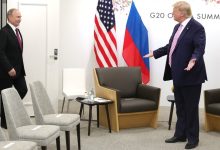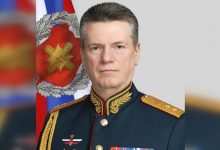
Countries should not compete through space programs, as this will only hurt humanity, astronaut Rakesh Sharma believes
Rakesh Sharma in an interview with RT in Bangalore, June 2024. © RT / RT
April 3, 1982 was a red letter day in the history of Indo-Russian joint space programs.
Rakesh Sharma, then a 35-year-old Indian Air Force (IAF) fighter jet pilot, flew aboard the Soyuz T-11 with two cosmonauts from the Soviet Union – Commander Yury Malyshev and Flight Engineer Gennady Strekalov – to the Salyut-7 space station to become the first Indian to travel to space. During the next eight days, Sharma photographed India from space and performed yoga exercises to study the effects on the body during weightlessness.
Sharma was chosen for the space program in 1982 along with backup Ravish Malhotra, another IAF officer. The two trained for two years in Russia before Sharma lifted off.
Four decades later, Sharma, now 75, lives in the picturesque hill town of Coonoor in the southern Indian state of Tamil Nadu. He vividly remembers how language and harsh Russian winters troubled him during the preparatory training for the challenging journey.
“Ravish and I did not know even a single word of the language, though the entire training was conducted in Russian. We found it difficult in the beginning but everything became easy once we learnt the language,” he told RT in an exclusive interview.
Rakesh Sharma during an interview with RT in Bangalore in June 2024. © RT
“Adjusting to the extreme weather was the other issue. We spent two winters there and the temperature came down to -30C,” he said, adding: “Our Russian colleagues always made us feel at home. People of Russia are much like Indians. They are emotional in their approach and they are simple folks as we are.”
Sharma said he could not hide his excitement when the Soyuz T-11 finally reached the Salyut-7 station and was greeted by the five Russian cosmonauts already aboard. Though Sharma had interacted with them before, their first physical meeting happened in space.
“With our arrival, the space shuttle had eleven cosmonauts. It was the first time that such a large number of space travelers orbited the Earth together,” he said.
Soviet-Indian space crew from left: Yuri Malishev; Ravish Malhotra and Rakesh Sharma; Georgi Grechko; Anatoly Berezov; Gennady Strekalov. © Sputnik / Sputnik
Salyut space stations, which served as living quarters and scientific laboratories for the cosmonauts, bore testimony to the Soviet Union’s commitment to exploring the cosmos.
The first such station was launched in 1971. Salyut-7, in which Sharma orbited the Earth, was launched in 1982, which continued in orbit until 1991. “We were there in the station for a short period, but the resident crew of the Salyut-7 continued on to establish a record,” Sharma said.
The stint was enough for Sharma to gain philosophical insight. “When you go up to space and look down at Earth, you won’t see the boundaries.”
April 1984. Members of the international crew of the Soyuz T-11 spaceship — Cosmonaut Researcher Rakesh Sharma of the Republic of India, Commander Hero of the Soviet Union Pilot-Cosmonaut of the U.S.S.R. Yury Malyshev (right) giving the first interview upon landing. © Sputnik / Sputnik
Time for collaboration
This realization may have prompted him to become an advocate for collaboration between countries in space programs. He believes these joint initiatives will remove the root causes of conflict on Earth.
“Inequitable distribution of wealth is the reason for conflict on planet Earth. This conflict will be exported to space if countries compete to extract resources,” he said.
Sharma predicts that countries will try to mine helium and rare metals from asteroids in space as Earth is running out of resources.
“But if we continue to go there with our national flags on our shoulders and if we start bringing stuff back for the exclusive use of our people, then conflict will affect space too,” he said.
Members of the Soviet-Indian space crew: Hero of the Soviet Union Pilot-Cosmonaut of the U.S.S.R. Gennady Strekalov, Indian Cosmonaut Rakesh Sharma and Hero of the Soviet Union Pilot-Cosmonaut of the U.S.S.R. Yury Malyshev (left to right) at the Gagarin Cosmonaut Training Center. © Sputnik / Sputnik
Sharma’s solution to this is joint space exploration. “If countries cooperate and explore space together and share the resources with everybody back on Earth, it would remove the root cause of conflict. Otherwise we are going to end up building a society which is as exploitative as Earth’s is today.”
Read more
Another reason he advocates international collaboration is his belief that no single nation has the means to go it alone, but each enjoys supremacy in certain areas.
“India is good at satellite technology, Russia has information on how humans can survive for long periods in space, and America has the advantage in technology,” he said. “We should not be going to space as Indian, Russian, Chinese, or American citizens, but as human beings from Earth. Such a change must come, because it doesn’t make sense to go thousands of kilometers and say that I am from India, Russia, China, or America.”
Interacting often with students, Sharma has seen the enthusiasm among young people for flying into space. “They can go there as pilot, researcher or scientist,” he says. “Because these skills will come in handy when countries set up colonies initially on the Moon and later perhaps on Mars.”
But he cautions that space travel is not all fun and games. “If you are going up there, you have to stay there for long enough to be productive,” he said. “It is going to be a tough life.”
Famous Indian Cosmonaut Rakesh Sharma addressing the ‘Indo Russian Space cooperation: Past ,Present and Future’ meeting held at RCSC in New Delhi on February, 2008. © Sputnik / Sonu Mehta/Hindustan Times via Getty Images
‘We are the best’
Sharma gave a beautiful description of India when then-Prime Minister Indira Gandhi asked him how the country looks from far above, during a live interaction from the space station. Sharma bowled her over and conquered a million Indian hearts when he quoted renowned poet Iqbal in his reply: “Saare Jahan Se Accha,” meaning India looks better than the whole world.
Prime Minister Indira Gandhi (1917 – 1984) with Indian astronauts Squadron Leader Rakesh Sharma and Squadron Leader Ravish Malhotra (right) who spent about eight days in the Soviet built Soyuz T-11 spacecraft on their return to New Delhi, July 08, 1983. © Sputnik / Sondeep Shankar/Getty Images
Sharma says he still finds it difficult to believe that the telephone conversation happened four decades ago. “Time flies, but my thoughts about India remain the same,” he said.
On his return from orbit, Moscow honored Sharma with the most coveted Russian award – Hero of the Soviet Union. This recognition helps him retain his association with Russia, one that began years before his space sojourn. “I flew Russian aeroplanes – MiG-21, MiG-23, and MiG-27 – during my IAF career before going to space,” he added.
In the Bangladesh Liberation War of 1971, he flew 21 combat missions in a MiG-21. “I am alive now because of Russian technology. I was ejected out of a MiG-21 because all the safeties worked well,” he said.
The iron-willed cosmonaut, however, feels sad talking about his colleagues on the mission, Malyshev and Strekalov, who died in 1999 and 2004 respectively. “I miss them dearly. I miss them on every anniversary of the space trip. I feel their loss deeply,” he said.
By T. A. Ameerudheen, based in Thiruvananthapuram, Kerala




